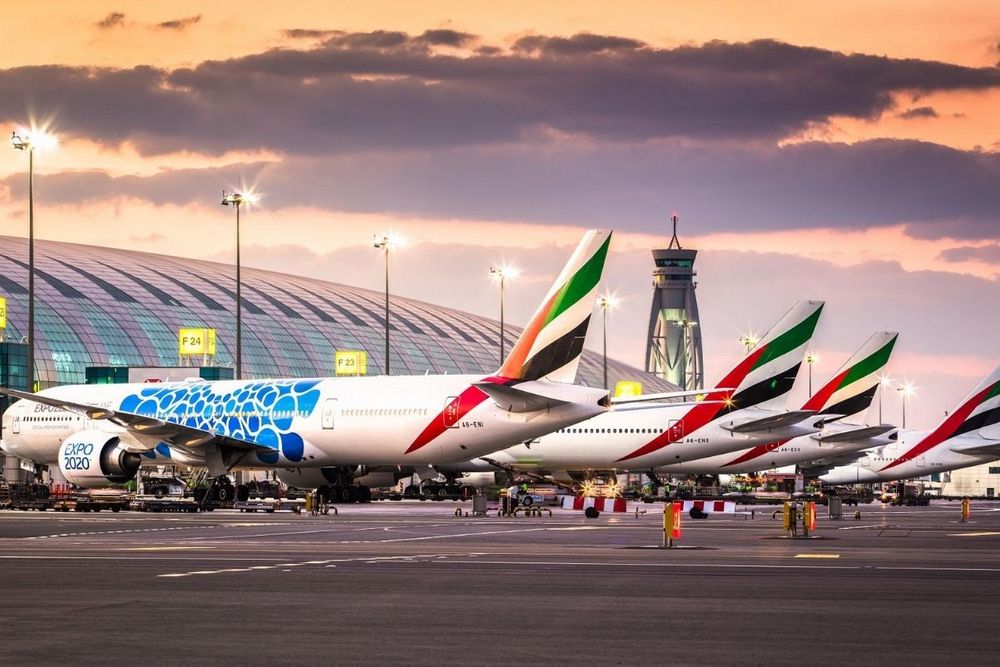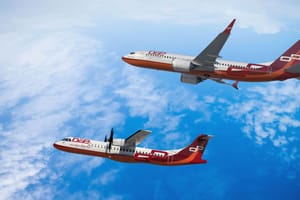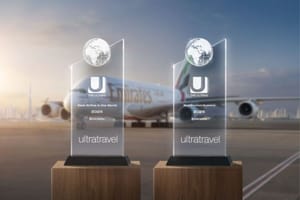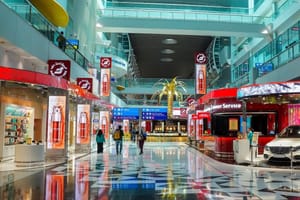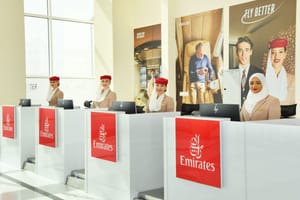Dubai’s flagship carrier Emirates was launched on October 25, 1985. On Monday, the airline celebrated its 36th anniversary. It is an incredible journey that started with a modest beginning to the world’s largest international passenger carrier.
Let's have a look at the many firsts witnessed by Emirates:
- The carrier has been crowned with several firsts, including the highest number of nationalities in any flight.
- It is the first airline to install video systems in all seats.
- It had installed telecommunications on an Airbus in all the three classes.
- The first airline to equip its Airbus fleet with an inflight fax facility for customers.
- It’s also the world’s first fully enclosed First-Class private suite among others.
In 1984, His Highness Sheikh Mohammed bin Rashid al Maktoum, Vice-President and Prime Minister of the UAE and Ruler of Dubai, who was the the Minister of Defence and a prominent member of the emirate’s progressive royal family, asked Sir Maurice Flanagan, then managing director of dnata, to look into starting an airline.
A comprehensive business plan was in place by December 1984.
Emirates was chosen as the new carrier’s name.
In March 1985, Flanagan was tasked with the ambitious mission to launch an airline in five months with seed funding of $10 million (Dh36.7 million).
He was told that the airline had to “look good, be good, and make money”. There would be no subsidies or aero political protection under Dubai’s open skies policy.
On October 25, 1985, Emirates took off from Dubai International Airport with inaugural flights to Karachi and Mumbai, using a Boeing 737 and an Airbus 300 B4 wet leased from Pakistan International Airlines (PIA).
On July 3, 1987, Emirates reached a milestone, taking delivery of its first aircraft as A6-EKA flew from Toulouse to Dubai, an Airbus A310-304.
In its first five years of operations, the carrier grew its network to over a dozen destinations across the Middle East, Asia, Africa and Europe.
In 1985, it flew to Mumbai, Delhi and Karachi. It added Amman, Colombo, Cairo and Dhaka in 1986, Male, Frankfurt and Istanbul in 1987, Damascus in 1988 and Jeddah and Kuwait in 1989.
In 1992, Emirates led the way for inflight entertainment, becoming the first airline to install video systems in all seats, in every cabin class throughout its fleet.
In 1992, Dubai International airport completed a major refurbishment, and Emirates moved into a new $2 (Dh7.35) million departure terminal.
Emirates ordered 7 Boeing 777s with 7 options, giving a vote of confidence for the industry hard hit by the first Gulf War.
In 1993, Emirates introduced telecommunications on an Airbus – in all three classes, becoming the first airline to do it.
In 1994, Emirates became the first airline to equip its Airbus fleet with an inflight fax facility for customers to stay in touch while in the air.
As the airline grew, Emirates Group took a 43 per cent stake in Air Lanka (later renamed SriLankan) in 1998 and signed a 10-year management contract.
The new Terminal 2 opened at Dubai International in 1998 to expand capacity to meet the growing demand for passenger traffic.
In 1999, passenger arrivals at Dubai international hit the 11-million mark. That financial year (19992000), Emirates carried 4.7 million passengers on its fleet of 32 aircraft.
By 1999-end, the airline’s network had grown to 50 destinations.
In 2000, Emirates became the first airline to sign up for the Airbus A380, ordering seven with options for five more at the Farnborough Air Show. The world’s largest commercial aircraft has become a flagship of the Emirates fleet over the past two decades.
In 2004, Emirates signed a £100 (Dh505.14) million deal with English Premiership club Arsenal, including naming rights to its new stadium. It was renewed in 2012 and 2018.
Emirates made history in 2005 with an order for 42 Boeing 777s in a deal worth $9.7 (Dh35.63) billion. This was the largest ever Boeing 777 order at the time. Today, Emirates is the world’s biggest operator of 777 aircraft.
The Emirates dedicated Terminal 3 was opened in 2008 at Dubai International. Half a million passengers departed from the facility within its first month of operation.
Emirates added 46 destinations between 2000 and 2010.
Al Maktoum International Airport was opened in 2010 at Dubai World Central. Emirates SkyCargo moved freighter operations to DWC by 2014.
Emirates and Qantas signed a commercial partnership in 2012 to give customers of both airlines seamless Australian and international network connections, exclusive frequent flyer benefits and world-class travel experiences.
In 2014, Emirates was named the world’s “Most valuable airline brand”, and the Middle East’s most valuable brand by Brand Finance, with an estimated value of $3.7 (Dh13.59) billion.
In 2016, Emirates was named the World’s Best Airline and received the 12th consecutive award for best Inflight Entertainment at Skytrax World Airline Awards.
Emirates and flydubai announced a strategic partnership in 2017, including an expansive codeshare agreement.
Keeping its tradition of being the first in introducing new concepts and technology, Emirates launched the world’s first fully enclosed First-Class private suites in 2017, with unmatched luxury and privacy.
The carrier bought 30 Boeing 7879 aircraft worth $8.8 billion (Dh32.32) at list prices at the Dubai Airshow in 2019. This added to its $16 (Dh58.77) billion Airbus A350 order, taking its total aircraft order at the Dubai Airshow to $24.8 (Dh91.09) billion.
The world’s largest international passenger carrier added 54 new destinations between 2010 and 2019.
News Source: Khaleej Times
